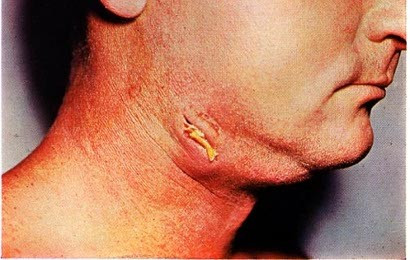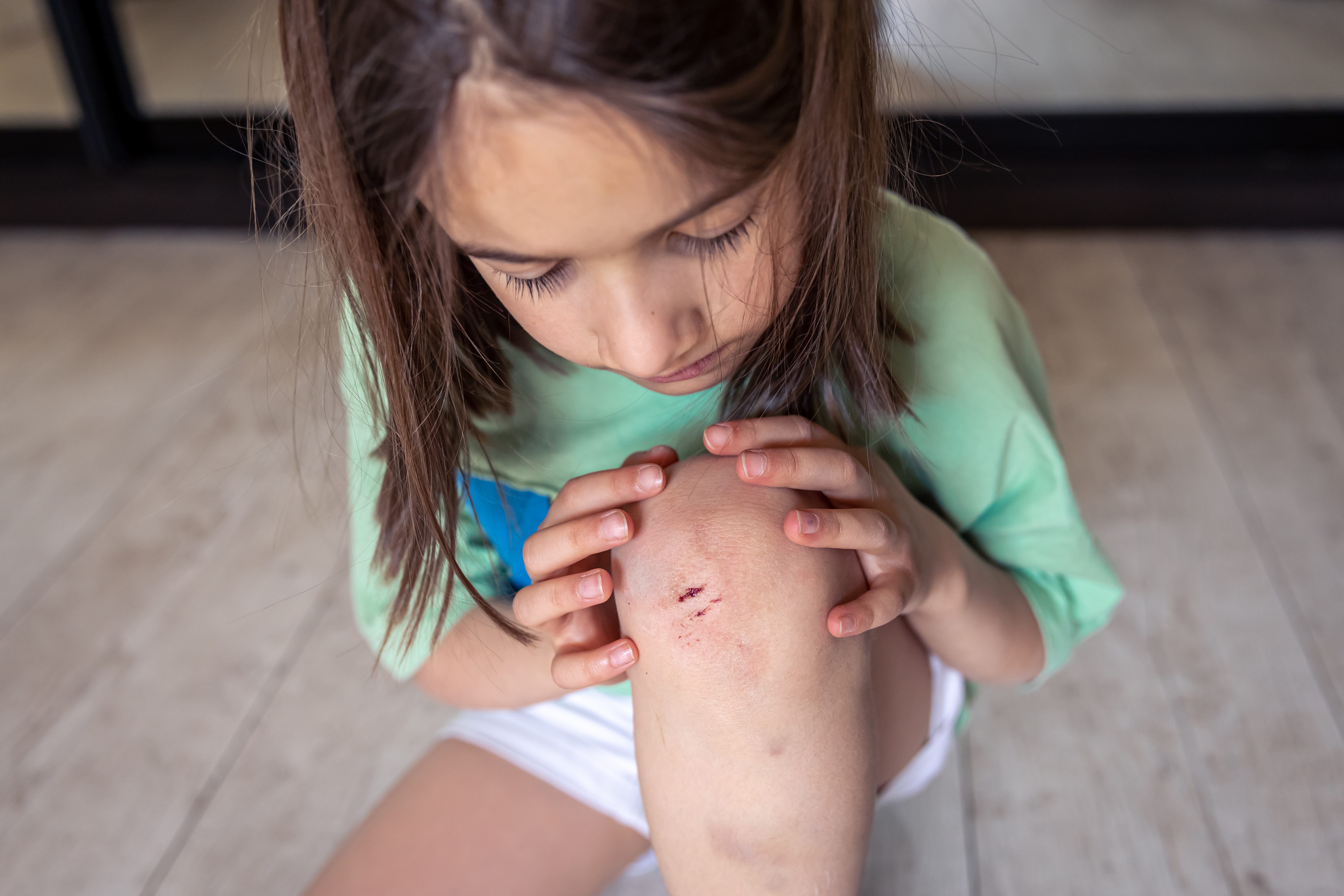Definition
Lymphedema refers to swelling in various areas of the body's lymphatic system that are affected. The lymphatic system plays a vital role in collecting excess fluid, proteins, and waste products from cells and tissues, and then returning them to the bloodstream. When the lymphatic system malfunctions, fluid accumulates, resulting in swelling.
One component of the lymphatic system is the lymph nodes. Lymphedema can arise from various factors, including conditions that impact the lymph nodes' function, such as cancer treatments that involve the removal or damage of lymph nodes. Disruptions in lymphatic fluid drainage can lead to accumulation and swelling, contributing to lymphedema.
While lymphedema commonly affects the arms and legs, it can also involve other parts of the body. Additionally, lymphedema heightens the risk of infection in areas where swelling occurs. This condition may develop following certain surgeries, specific medical conditions, or genetic predispositions.
Lymphedema manifests in two primary forms: primary and secondary. Primary lymphedema is a rare condition inherited from birth that impacts the development of the lymphatic system. It typically manifests in infants, teenagers, and adults. An example is Milroy's disease, a genetic disorder that leads to primary lymphedema.
On the other hand, secondary lymphedema arises when the lymphatic system sustains damage due to surgery, trauma, or radiation therapy.
While lymphedema commonly affects patients undergoing breast cancer treatment, not all individuals undergoing such therapy develop lymphedema. It's important to note that lymphedema itself is not a form of cancer.
Causes
Some causes of primary lymphedema are uncommon and typically occur in patients with congenital blockage of the lymphatic system. The primary cause of primary lymphedema is genetic abnormalities. Additionally, some other contributing factors include:
- Minor trauma: Conditions like sprained ankles can lead to acute inflammation and swelling in individuals with primary lymphedema. Children with primary lymphedema may have a reduced capacity to remove lymphatic fluid, which becomes apparent after minor trauma. Minor trauma can also temporarily impair lymphatic vessel function, initiating lymphedema.
- Medical procedures: Similar to minor trauma, minor medical procedures can induce swelling and inflammation, resulting in lymphedema symptoms. For instance, lymphedema can develop in the genital area due to medical procedures.
- Insect bites: Insect bites can trigger local swelling and inflammation, which may precipitate lymphedema.
- Infection: Infections occurring in areas with reduced lymphatic capacity can trigger the onset of primary lymphedema.
- Limited movement (sedentary periods): Prolonged immobility, such as during long flights, can cause leg swelling. In patients with asymptomatic primary lymphedema, this swelling may be more pronounced, especially in children with diminished lymphatic capacity, leading to lymphedema symptoms.
Secondary lymphedema is a condition that arises as a complication of disease treatment, particularly cancer treatment such as mastectomy (breast removal) or radiotherapy. Various causes of secondary lymphedema include:
- Malignant tumors
- Lymphatic damage resulting from medical disorders, including cancer treatment or surgery
- Certain traumatic wounds capable of permanently impairing lymphatic channels and glands
- Infections causing severe inflammation
- Syndromes and other symptoms inducing lymphatic disturbances
Risk factor
Several risk factors may heighten the likelihood of developing lymphedema, including:
- Age: Older patients are more prone to experiencing lymphedema.
- Patients undergoing cancer treatment, particularly radiation therapy in the lymphatic area, and those with tumors, have an increased risk of developing lymphedema.
- Individuals with rheumatoid arthritis or psoriasis (skin inflammation) may also be at higher risk.
- Being overweight can also contribute to the risk of developing lymphedema.
Symptoms
In the early stages, the development of lymphedema may go unnoticed by the patient. Typically, patients will experience symptoms originating from the source of lymphedema (whether primary or secondary) or the specific location of the affected part of the body.
The stages of lymphedema are described using the Foldi scale, which ranges from mild to severe. Symptoms can vary in intensity. Lymphedema resulting from cancer therapy may not recur for several months or even years after treatment.
Common symptoms experienced by individuals with lymphedema include:
- Swelling in one or more parts of the arm or leg, including toes or fingers.
- Pain in the swollen or affected area, along with bruising.
- The sensation of tightness or heaviness makes movement difficult or causes stiffness.
- Easily fatigue
- Recurrent infections
- Fever accompanied by chills
- Hardening and thickening of the skin
- Skin infections
- Inflammation of the lymph nodes
Diagnosis
Diagnosing both primary and secondary lymphedema involves several steps, including:
- Physical examination and medical history
The doctor will inquire about your condition, including the reason for the swollen limb.
- Lymphoscintigraphy
This method is highly effective in confirming the presence of lymphedema and determining the location and extent of lymphatic damage. In some cases involving leg lymphatic issues, lymphoscintigraphy involves injecting a radioactive tracer into the patient's leg and mapping the tracer's flow over time using a radiation detection camera. However, its use in children is still debated as to whether it is permissible or not.
- MRI (Magnetic Resonance Imaging) and CT Scan
These imaging techniques are valuable in identifying the presence of lymphedema by detecting any blockages in the lymphatic system and assessing the condition of your bone structure.
- Other examinations
These tests aid the doctor in pinpointing the source of the swelling. Ultrasonic examinations can determine whether the swelling is caused by fluid and its type, or detect vascular clots as an alternative cause. Additionally, examining blood flow and pressure using sound waves can provide valuable insights. Ultrasonic examinations in pregnant women, especially during the first trimester, can help identify lymphedema.
Management
The objective of lymphedema treatment is tailored to the specific condition, cause, and stage of lymphedema. Recommended treatments may encompass physical therapy or other interventions aimed at facilitating lymphatic fluid movement and reducing swelling and pain.
Treatment options for lymphedema encompass various therapies, medications, and surgical procedures:
Therapy
- Gentle exercise to stretch affected muscles and aid in fluid drainage.
- Utilization of specialized tools such as compression garments or pneumatic compression devices to apply pressure and promote fluid drainage.
- Elevating the affected limb above heart level by placing it on a cushioned surface to alleviate symptoms.
- Manual lymphatic drainage massage techniques performed by a professional healthcare provider to enhance lymphatic fluid flow and remove harmful substances from affected tissues. Not recommended for individuals with blood clotting disorders or skin infections.
- Complete decongestive therapy, a comprehensive approach combining multiple therapies with lifestyle improvements. Not suitable for patients with certain conditions like heart failure, acute infections, diabetes, hypertension, or paralysis.
Medications
- Prescription of medications tailored to the underlying cause. Antibiotics may be prescribed to treat infections, while pain medications can help alleviate discomfort.
Surgical procedures
- Considered in severe cases of lymphedema to remove excess fluid or tissue. It's important to note that surgical intervention can only alleviate symptoms and cannot fully restore function.
Complications
In some instances, complications may arise at various stages of lymphedema, such as skin and tissue changes. Common complications include infections like cellulitis, which typically presents as a warm, soft, and reddened area and often responds well to antibiotics.
Other complications may involve psychological issues, alterations in skin conditions, and urinary tract disorders. In severe cases of skin infection, sepsis may develop, necessitating immediate medical intervention.
Prevention
While you cannot eliminate all risks of lymphedema, you can take several steps to reduce and prevent swelling. Some actions you can take include:
- Monitoring your body: Regularly inspect and measure affected areas to detect minor changes that may indicate early signs of lymphedema before noticeable swelling occurs.
- Elevating affected areas: Keep the affected limb elevated above heart level to facilitate fluid drainage.
- Staying active
- Avoiding extreme temperatures
When to see a doctor?
It's important to contact your doctor if you notice swelling in your arm or hand or suspect an infection. If you're undergoing cancer treatment, discuss any concerns or symptoms, such as swelling in your legs or arms, redness, warmth, and pain, with your doctor for further evaluation and management.
Looking for more information about other diseases? Click here!
- dr. Lukita Tarigan
Centers for Disease Control and Prevention. (n.d.). Lymphedema. Centers for Disease Control and Prevention. https://www.cdc.gov/cancer/survivors/patients/lymphedema.htm
Frothingham, S. (2018, July 11). Lymphedema therapy: Treating swollen arms and legs. Healthline. https://www.healthline.com/health/lymphedema-therapy
Lymphedema - statpearls - NCBI bookshelf. (n.d.). https://www.ncbi.nlm.nih.gov/books/NBK537239/
Lymphedema Surgery & Lymphatic reconstruction. Cleveland Clinic. (n.d.-a). https://my.clevelandclinic.org/departments/dermatology-plastic-surgery/depts/lymphedema-surgery-lymphatic-reconstruction
Lymphedema. Lymphedema in Children | Boston Children’s Hospital. (n.d.). https://www.childrenshospital.org/conditions/lymphedema
Pediatric lymphedema. Cleveland Clinic. (n.d.-b). https://my.clevelandclinic.org/pediatrics/departments/lymphedema
professional, C. C. medical. (n.d.). Lymphedema: Symptoms, causes & treatment. Cleveland Clinic. https://my.clevelandclinic.org/health/diseases/8353-lymphedema











